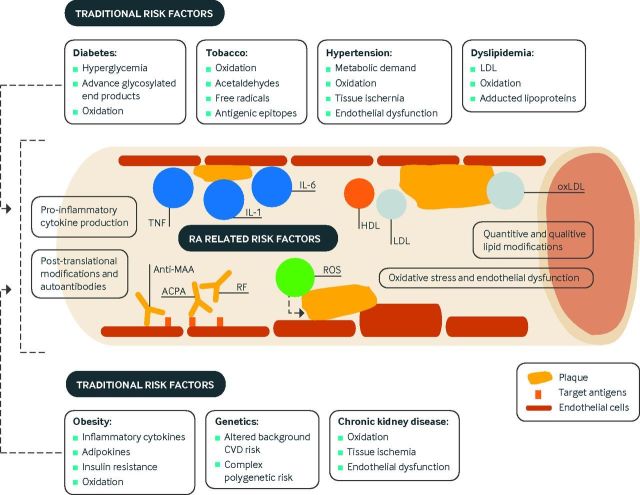Fig 1.
Overview of mechanisms of cardiovascular disease (CVD) in rheumatoid arthritis (RA). Several mechanisms interact to amplify risk of CVD in RA. Higher RA disease activity contributes to systemic inflammation and pro-inflammatory cytokine production. This inflammation causes quantitative and qualitative lipid modifications resulting in perturbations of cholesterol transport and enhanced foam cell formation. Post-translational modifications of proteins serve as targets of RA autoantibodies that may have deleterious effects on the cardiovascular system and enhance systemic/local inflammation. Oxidative stress, which results from inflammation, contributes to post-translational modifications of proteins and directly affects endothelial function. These RA related mechanisms exacerbate the pathogenicity of traditional CVD risk factors such as tobacco use, diabetes, hypertension, dyslipidemia, obesity, and chronic kidney disease. ACPA=anti-citrullinated protein antibodies; HDL=high density lipoprotein; IL=interleukin; LDL=low density lipoprotein; oxLDL=oxidized LDL; MAA=malondialdehyde-acetaldehyde; RF=rheumatoid factor; ROS=reactive oxygen species

